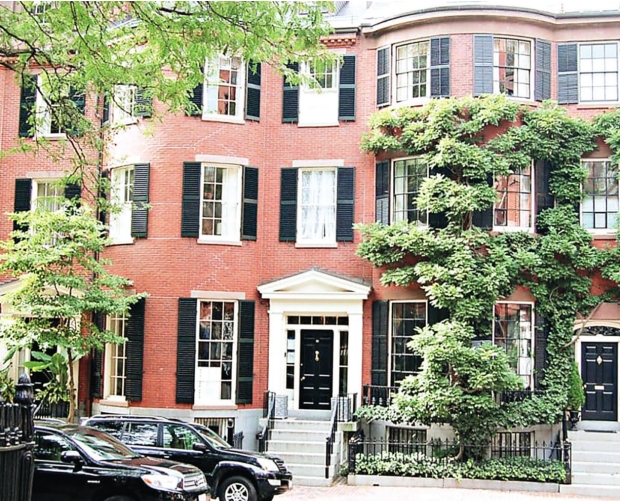
With just a brief glance around Beacon Hill, one can tell it is a neighborhood of deep historical significance. State and local politics have their seats of power here. Sites that mark milestones in the birth of the U.S. are intermingled with everyday life.
But the brownstone residential buildings that line Beacon Hill’s cobblestone streets bear a more subtle historical importance.
They tie into an early American architectural tradition, and they make the city of Boston its earliest participant.
“Brownstones”
is the colloquial name for the three-to-five-story brick townhouses
that fill Boston’s historic neighborhoods, like Beacon Hill and the Back
Bay. Many brownstones were originally built in the 19th or early 20th
centuries.
Most of the
brownstone in these historic buildings came from the Portland
Brownstone Quarries in Connecticut, which was designated a national
historic site in 2000. Dr. Joanne Kleussendorf, the geologist who
submitted the quarry for historic site consideration, wrote extensively
about the historical significance of brownstone in American
architecture.
“Utilized
in many architectural styles over the span of nearly three centuries,
brownstone was used to construct both the palatial mansions of the
wealthy and rowhouses of the middle class,” Kleussendorf wrote in her
submission. “Prior to the 1840s, brownstone was used mostly as building
foundations, quoins, and trim. In the early 1840s, however, the Romantic
movement in architecture swept the nation.”
Brownstone
is a warm, earthy color and is easily carved into artful shapes, which
made it a perfect fit for this movement, Kleussendorf wrote. And so, in
the mid-1800s, the “Great Brownstone Era” began. Brownstone was quarried
in Portland and shipped along the Connecticut River to major U.S.
cities like New York, Philadelphia and Washington, D.C.
But, according to Kleussendorf, Boston was already ahead of the curve.
“Portland
brownstone appears to have been shipped to Boston early on,”
Kleussendorf’s submission states. “One of the earliest recorded uses of
this stone was in the Old Province house there, which was erected in
1679 with a flight of twenty massive brownstone steps. Constructed
between 1737 and 1740 on Beacon Hill in Boston, the Thomas Hancock house
had Portland brownstone trim.”
The
Old Province House, formerly the seat of Massachusetts royal governors,
was situated on what is now Washington Street in Downtown Crossing,
according to a historic marker placed there. The Thomas Hancock house,
more commonly known as Hancock Manor, sat at 30 Beacon Street, on what
is now the grounds of the Massachusetts State House.
The
construction of those buildings predates the “Great Brownstone Era” by
at least 100 years, which means that Boston was on the brownstone trend
far ahead of any other city. So, despite their popularity in other areas
of the country, brownstones in Boston carry special significance.
This
is evident with just one look at Beacon Hill, where original brownstone
houses still stand today. Consider the double townhouse on Beacon
Street built by architect Asher Benjamin in 1808. One half of the double
townhouse is a national historic site and museum. The other is
refurbished and fully residential. Brownstones tie directly into the
historic fabric of the city, which makes the winding streets of Beacon
Hill even more special.